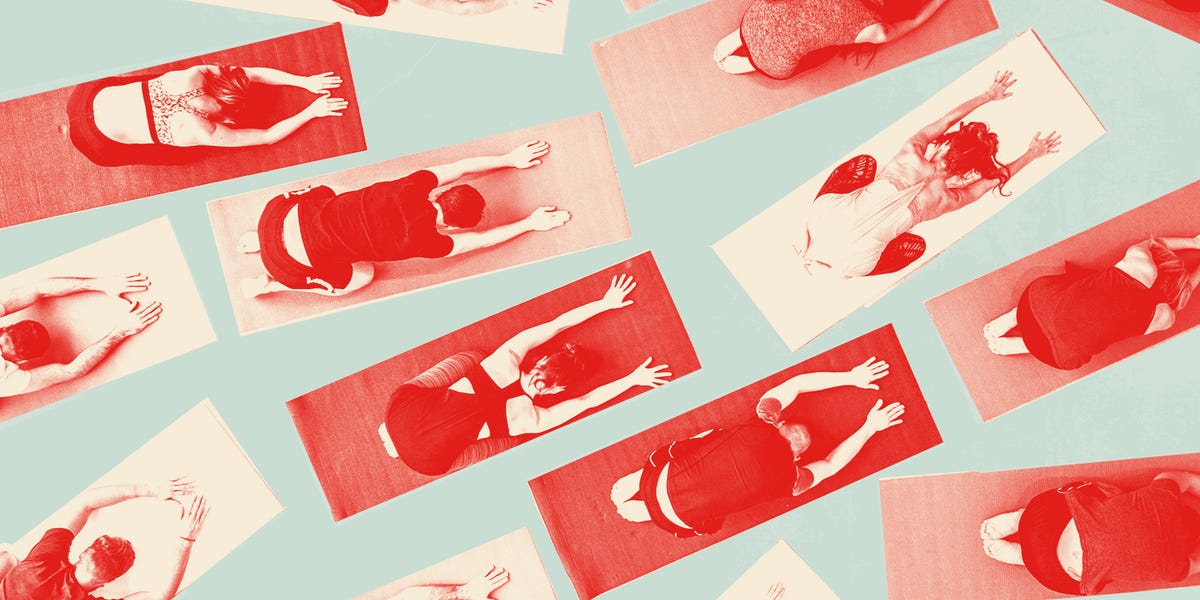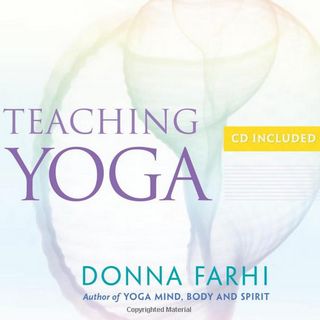

Something’s snapped. After the 2016 presidential election, women nationwide wanted to make a scene. We flooded streets in protest. We filled out ballots. Whispers gave way to battle cries. We didn’t do it for “attention.” We did it for progress. In “Fired Up,” ELLE.com explores women’s rage—and what comes next.
Advertisement – Continue Reading Below
“I had teachers grope my breasts in Shavasana, saying that they were helping me open my heart chakra.” This is just one story Aruba-based yoga teacher Rachel Brathen, a.k.a. @yogagirl, read when she began her mission to bring #MeToo into the world of yoga. After receiving DMs detailing similar stories, Brathen invited her 2.1 million Instagram followers to share their stories of sexual harassment in yoga last November, and was inundated with responses.
The personal testimonies in her inbox ranged from inappropriate touching and emotional manipulation to assault and rape by predatory yoga teachers. “One of the teachers I’ve received several messages about is accused of sexually abusing a 15-year old girl during a yoga teacher training,” she wrote on that Instagram post. “I could vomit… But I’m too fucking angry.”
“They’re all awful,” Brathen tells me of the 400-plus stories she’s received. “[In] something that’s so sacred and so beautiful as the yoga practice, it just breaks my heart. There were several women that wrote in that said that they never returned to yoga after that, and that just kills me.”
Advertisement – Continue Reading Below
Yoga boasts over 36 million practitioners in the U.S. alone, according to the 2016 Yoga in America Study. For many, it’s a life-enhancing practice; Brathen, who has practiced yoga since she was a teenager, says, “It’s completely transformed my life, healed my back pain, and given me tools to find my balance and center through highs and lows of life.”
But others have encountered instructors who exploit the physical closeness and touch that are often part of yoga instruction. “There were instances of rape by teachers that had said, ‘I need to help you in your spiritual development through sex,’” she says. “Some women said they’d gotten adjustments in downward-facing dog by a male teacher who stood behind them, pressing his crotch in their butt area.”
Instruction in many methods involves hands-on adjustments to correct students’ postures, which can make it easy to get away with sexual misconduct in a class setting. Then there’s the emotional vulnerability involved with learning a practice so closely associated with wellbeing and spirituality—and the fact that yoga teachers are not required to be background-checked or held accountable by any single governing body. “It’s a very easy space for a predator to take advantage,” she says. “There’s a lot of grey area.”
Brathen hopes to expose those predators and has, with permission, connected survivors abused by the same teachers, helping them to collate evidence that could be helpful should they want to prosecute. “I have close to 35 names of different men,” she says. Some are repeat offenders: “Those are the ones where I’ve really worked hard to connect women, and to make sure they have a case.”
Advertisement – Continue Reading Below
Advertisement – Continue Reading Below
“The inequity of power and the lack of supervision is a greenhouse,” psychotherapist Richard Golden, who has worked extensively with survivors of sexual abuse, says of the yoga industry. Golden also says that experiences like retreats can intensify this effect. “There’s kind of a false intimacy in those environments,” Golden says. “It’s almost like you’re pushed into being personal, into feeling and expressing your feelings, and there’s this expected intimate relationship. That’s what makes it easy for boundaries to be crossed.”
In 2013, Bikram Choudhury—a self-styled “inventor” of hot yoga—was accused of sexual assault and rape by several students. Many said his classes had an almost cult-like atmosphere; Sarah Baughn, a student who says Choudhury sexually assaulted her at a 2008 training retreat, told HBO’s Real Sports in 2016, “He was in charge of all of these people, all of whom just sat and listened and laughed and applauded and regarded him as a yoga god.” Dennis Abry, a yoga teacher, psychologist, and professor of psychology in Scottsdale, Arizona notes that this dynamic can be fraught: “Where there’s a powerful person who can make you feel very special, and therefore manipulate you to do things you wouldn’t otherwise do, it’s not significantly different than the way a cult leader operates.”
In January 2016, Choudhury was ordered by an L.A. court to pay $6.5 million to his former legal advisor Minakshi Jafa-Bodden in damages for sexual harassment and wrongful termination. Jafa-Bodden said she was sexually harassed and then fired when she “refused to stay silent about witnessing illegal behavior,” according to her attorney, Mark Quigley.
But when sexual harassment happens in yoga, it’s usually much less clear-cut than in Choudhury’s case. It can be subtle or harder to describe, and therefore often goes unreported. Donna Farhi, a New Zealand-based yoga teacher, experienced abuse that she initially found difficult to define and relay to others. Farhi has been teaching since 1982, and the #MeToo movement helped her to recover painful memories about a teacher she’d had in her late twenties.
“First, I was in a yoga posture and he smacked me across the back, and said, ‘Not good enough,’” Farhi tells me. “Then I was sitting in a posture where you have your feet together and your knees out to the side,” she says. “He sat down, put his toes very close to my groin, reached around my back and pushed my breasts towards his face and then whispered, ‘How’s your sex life?’ I was so taken aback. I didn’t know how to respond.”
His behavior escalated. “Almost every class, he was verbally humiliating me,” Farhi said. Then he invited her to his room to listen to music. “I thought perhaps he realized he’d pushed me way too far and was trying to be nice,” she said. “Within a few minutes, he asked me whether I wanted to sleep with him.” When Farhi said no, the teacher tried to tell her it was her idea. She left and told another teacher, but years later her abuser cornered her at a conference, and said her interpretation of the events was down to her “impure thoughts.”
Farhi fell into a deep depression afterward, but ultimately became a well-known activist in the yoga world and has published several books, including Teaching Yoga, which explores the teacher–student relationship.
Advertisement – Continue Reading Below
For Farhi, the relationship between teacher and student must be handled with care because yoga is “a practice of profound self-inquiry,” and students must feel safe and respected during that process. She wrote the book because, she says, “for years I felt intense anger and frustration about the abuse that was happening within the community. But being angry is not enough. Taking action mobilizes that anger, and that action was to provide information about the roles and responsibilities that a yoga teacher assumes.”
There might not be any one centralized body responsible for creating standards of behavior, but one group called Yoga Alliance is trying to establish some rules for good teacher–student relationships. While they can only suggest guidelines, they are fighting to make sure yoga studios hear about their Standards Review Project. Yoga Alliance’s chief operating officer, Shannon Roche, says, “Having clear policies and making those policies public, and holding people accountable puts everybody in a better place and makes everybody more safe.”
As for other ways of preventing sexual misconduct in yoga classes, some studios have implemented a “no touching” rule. There is also a company called Yoga Flipchip that sells a small disc you can place by your mat or hand to your teacher to indicate whether you’re okay with hands-on assistance or not. Abry says he has a policy of asking first: “A lot of teachers will begin class by approaching new students and saying, ‘I give hands-on adjustments in this class. If you don’t want me to provide them for you, that’s perfectly fine, just let me know.’ If you’re touching a person, you say, ‘Is this okay?’ And you want to be careful to do it in a way that the student knows it’s totally fine to say no.”
If something does happen that crosses a line, Roche encourages students and teachers to get in touch with the National Sexual Assault Hotline or a victims’ advocate: “If you’re able to feel comfortable, then you should report the crime to law enforcement as well.”
Now, Brathen finds herself driven to collect as many stories as possible, support survivors, and connect those who want it. With yoga being an enriching practice for so many, she wants it to be safe for everybody and abuse-free. “I don’t want this to be fear-inducing, like, ‘Never practice yoga with a male teacher again,’” Brathen says. “It’s these few bad apples that make the experience harder for everyone. There are great teachers out there, so I hope we can elevate them and bring trust back into the practice.”
To share an experience of sexual harassment or abuse in yoga, email Rachel Brathen: info@rachelbrathen.com.
To report misconduct to Yoga Alliance, visit their website.
The National Sexual Assault Hotline can be reached 24 hours a day at (800) 656-4673.


Be the first to comment